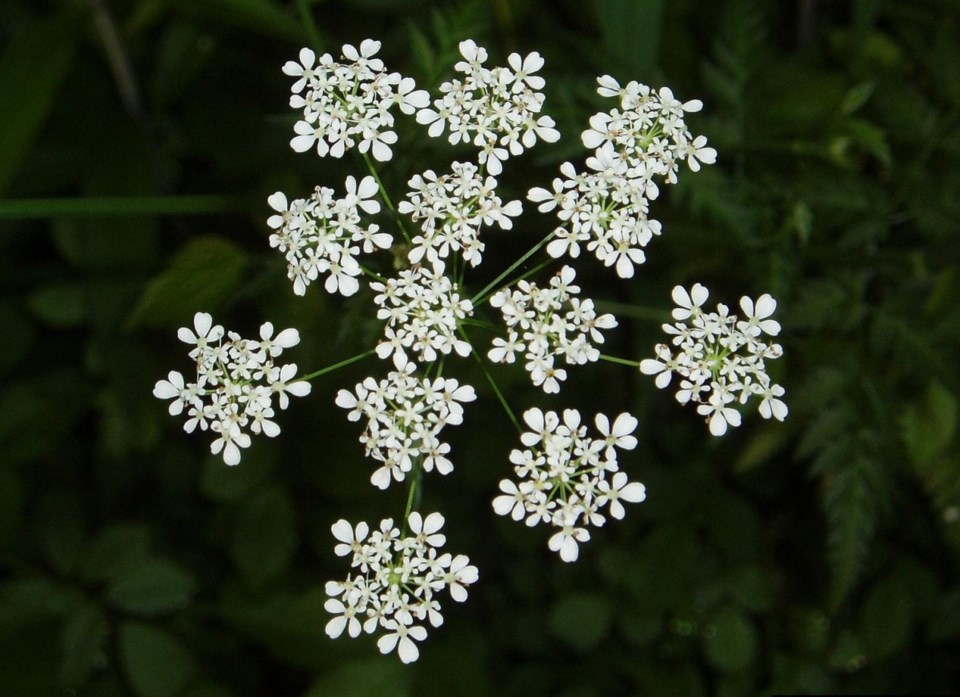The Town of The Blue Mountains has notified residents in the rural areas of the community of changes to the town’s annual wild chervil management strategy.
New this year, the town is shifting to a reactive approach to managing wild chervil that will rely on spot spraying and shared stewardship with the public. If residents identify wild chervil within the road allowance fronting their property they are asked to either cut the wild chervil themselves before it goes to seed, or contact the town’s operation’s department prior to Monday, May 15, 2023 to arrange a spot spraying treatment. With this change in process, residents will no longer have to opt out of pesticide spraying.
The pesticide application will be conducted by a licensed technician. Unmaintained sections of the town road allowance will still be sprayed if there is evidence of wild chervil. The town will issue a formal notice on its website before the spraying starts. A map highlighting areas of concern where wild chervil is more likely to be found has been created for the aid of residents.
In addition, a list of frequently asked questions has been posted to the spring, summer and fall road maintenance page on the town’s website.
The town has also reminded residents that it is only responsible for rural roads that are within the jurisdiction of the Town of The Blue Mountains. All county roads are within the jurisdiction of Grey County, which administers its own noxious weed control program. For information, please visit the county’s website
Wild chervil is a herbaceous biennial or short-lived perennial from the parsley family, introduced to North America from Europe. It was first brought to North America as part of European wildflower seed mix used for plantings along hedgerows and meadows.
This species is short-lived, forming a rosette of only leaves in the first year, then flowering and producing seeds in the second year. As a heavy seed producer, it is easily spread to new locations. Wild chervil has few checks on its population in North America and can quickly take over an area, displacing native species and forming dense stands that are difficult to control.
When spraying the weed, the town's contractor will utilize a pesticide approved for use and regulated under the Pest Management Regulatory Agency and the Provincial Pesticide Act.
Wild chervil is detrimental to agricultural lands. The town encourages all property owners and residents to actively identify and eliminate wild chervil on their own properties in fields, lawns and gardens to help reduce the spread of this noxious weed.
To assist with identification and elimination options, please visit the invasive species page on the town’s website. Additional Information on wild chervil can be found by visiting the Ontario Invading Species Awareness Program website.
It is also important to understand that wild chervil can be confused with Queen Anne’s lace (Daucus carota). Wild chervil usually flowers in mid-to-late spring; Queen Anne’s lace flowers later in the season. However, the leaves of wild chervil are more distinctively fernlike in shape. The umbels (flower clusters) of Queen Anne’s lace have bracts (leaf-like structure) below them, while the umbels of wild chervil do not have bracts.

